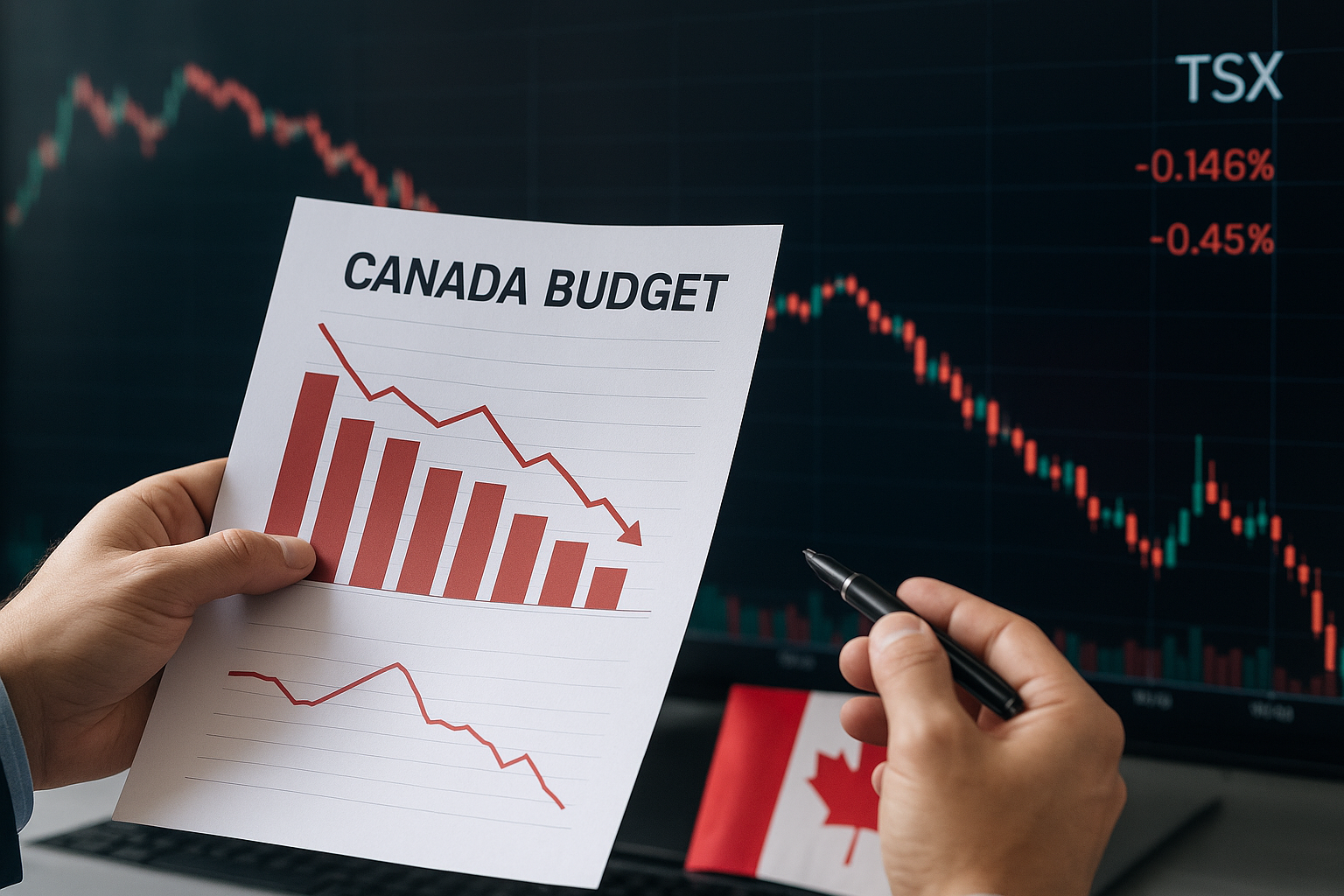Canada’s financial markets opened the week on edge as speculation swirls around the upcoming 2025–26 federal budget, with Prime Minister Mark Carney’s government signaling a “significant” fiscal shortfall. The Toronto Stock Exchange (TSX) slipped into profit-taking territory on Tuesday, with futures dropping amid investor unease over the size of the anticipated deficit and its potential implications for interest rates, corporate profitability, and the Canadian dollar.
According to 650 CKOM and Reuters, the federal budget—set to be unveiled later this month—is expected to include expansive infrastructure spending and new energy-transition measures, but without the corresponding revenue offsets that would ease investor concerns. Markets are bracing for higher borrowing needs and the possibility of additional Bank of Canada tightening if fiscal policy stokes inflationary pressure.
Why Markets Are Nervous
The word “deficit” has once again become a trigger for Canadian investors. Analysts expect Ottawa to post a shortfall exceeding CAD 60 billion, up sharply from last year’s projections of CAD 45 billion. While Carney’s administration has championed growth-oriented spending, particularly in housing and clean energy, the growing fiscal imbalance is raising questions about long-term debt sustainability.
“Fiscal discipline appears to be slipping at a time when the Bank of Canada is trying to bring inflation back to 2%,” said one senior economist quoted by Reuters. “If the government overshoots, it complicates monetary policy and may keep rates higher for longer.”
The Canadian dollar (CAD) fell modestly against the U.S. dollar, trading near 1.38 CAD/USD, while yields on Canadian 10-year bonds ticked up, signaling investor demand for higher risk premiums. Financial and energy stocks—key pillars of the TSX—were among the hardest hit, reflecting concerns that tighter financial conditions and weaker consumer sentiment could squeeze profits into 2026.
Why This Matters for Investors
Fiscal uncertainty is not just a headline risk—it affects asset allocation, currency exposure, and capital flows. With the government potentially borrowing more heavily in domestic markets, bond supply could rise, putting downward pressure on prices. Investors in Canadian Treasuries may face near-term volatility but could find opportunities in short-duration instruments if yields climb further.
Equity investors, meanwhile, are re-evaluating sector exposure. Historically, large deficits and rising yields have weighed on financials and real estate, while commodities—particularly oil and precious metals—can act as relative hedges. The Bank of Montreal (BMO) and Royal Bank of Canada (RBC) each declined over 1% on Tuesday morning trading, while gold producers like Agnico Eagle Mines saw mild inflows as investors sought stability.
“Fiscal expansion could be a double-edged sword,” said a strategist at CIBC Capital Markets. “It may support growth in the short term, but if debt levels climb too quickly, international investors could demand higher yields to hold Canadian assets.”
Broader Policy Implications
The upcoming budget also carries political weight. Carney’s Liberal-led coalition faces mounting pressure to balance stimulus goals with fiscal prudence, especially as global investors compare Canada’s debt trajectory to that of its G7 peers. According to Bloomberg, Canada’s debt-to-GDP ratio is projected to rise from 42% to nearly 46% by 2026—a sharp increase that could erode the country’s traditionally strong credit standing.
International rating agencies are monitoring closely. Moody’s recently reaffirmed Canada’s AAA rating but flagged the “risk of fiscal slippage” as a key watchpoint. A downgrade—though not imminent—could increase borrowing costs and add further volatility to debt markets.
In global terms, Canada’s budget path mirrors a broader trend of post-pandemic fiscal fatigue. Governments from the U.K. to Japan are facing similar challenges: how to sustain economic growth while managing higher debt servicing costs amid a world of structurally higher interest rates.
Future Trends to Watch
Investors should watch three core developments in the coming weeks:
- Budget Release Details: The exact size of the deficit and any new tax policies on capital gains or corporate profits will set the tone for Q4 market sentiment.
- Bank of Canada Reaction: Governor Tiff Macklem’s response will be crucial—any hint that the central bank sees fiscal policy as inflationary could trigger another rate hike cycle.
- Commodity Market Feedback: As Canada remains a top exporter of oil, copper, and gold, the fiscal stance could influence capital flows into the resource sector—especially if the Canadian dollar continues to weaken.
Key Investment Insight
The near-term outlook suggests heightened volatility across Canadian assets, but this uncertainty also creates select opportunities. Investors should:
- Monitor short-term yields and financials: Rising rates may challenge banks but create openings in preferred shares and short-term corporate debt.
- Stay exposed to commodities: Gold and energy equities could offer relative protection if the CAD weakens.
- Diversify internationally: A stronger USD and uneven fiscal execution make cross-border exposure appealing, particularly in U.S. tech and defensive sectors.
Canada’s upcoming budget could redefine its fiscal landscape for years to come. Investors are advised to stay alert for the official release later this month—and track the market’s reaction in real time through MoneyNews.Today, your trusted source for daily investor insights.





